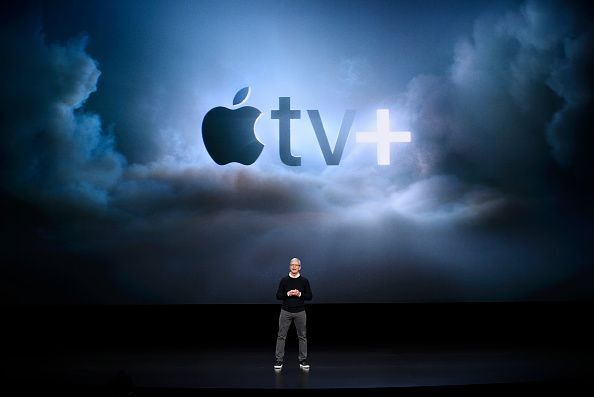Apple TV+: What Consumers And Investors Need To Know

Apple (NASDAQ:AAPL) has quietly launched its new streaming television service. Consumers went to bed on Halloween without Apple TV+, and then awoke on Nov. 1 to find the service.
To be fair, many may not find it, as it's somewhat hidden inside the Apple TV app. That app, which generally appears on the first screen of your iPhone or iPad, houses all of the television and movie content Apple offers, not just its new streaming service.
It's an underplayed rollout of a major product for the technology behemoth. The company has partially hidden the new service, which features an expensive, somewhat impressive lineup of original content.
How do you get Apple TV+?
iPhone and iPad users can find Apple+ content inside the Apple TV app. It's mixed with other free and paid content, along with subscription services including HBO. If you scroll around, however, you will find groupings that list the Apple TV+ exclusive shows.
If you click on one of those shows you're prompted to register for the service. Anyone with a new Apple device (one purchased within the past three months) gets a free year for their family sharing group. After the free year, the plan automatically renews until it's canceled.
Anyone who does not have a new Apple device pays $4.99 per month for family access. Apple explained how to find the app on its website:
If you have an iPhone, iPad, Mac, or Apple TV, you already have the Apple TV app — the ultimate way to watch Apple TV+. You'll also find the Apple TV app on select Samsung smart TVs. And in the future, we'll be bringing the Apple TV experience to even more smart TVs, streaming boxes, and streaming sticks.
iPhone and iPad users should see the app on the first page of their device. Max users can find it among the icons at the bottom of their device's screen.
What does Apple+ mean for investors?
Apple has committed to spending hundreds of millions, if not billions, of dollars to create original programming. That only makes sense if one or both of the following happens:
- Apple gets people to buy more devices: If the promise of a free year of the service gets someone to upgrade their iPhone, iPad, or Mac, then that helps the company.
- Consumers are willing to pay for the service: Apple has roughly 1 billion customers globally. If 10% pay $4.99 a month for its streaming service, that's just under $500 million in added revenue.
The challenge for Apple -- and it's a major one -- is whether consumers will be willing to pay. Getting consumers to sign up for what is essentially a free 12-month trial should be easy (though hiding the service in an app that's not named Apple TV+ makes things a little harder). Enticing people to actually watch shows on the service is much more difficult.
Amazon gives Prime members a similar free TV service. None of its shows have become breakout hits, though, and it's hard to imagine that many people would pay for the television offering if it was not part of Prime.
Apple faces an uphill battle. Producing high-quality original programming is very expensive, and offering good shows does not guarantee viewership. This is a very risky path for investors -- the company is committing significant capital to a service that consumers may ignore simply because there's already more than enough quality television to keep them busy.
It's hard to picture Apple TV+ breaking through and being a real alternative to Netflix or Walt Disney's upcoming streaming service. That makes this a potentially risky bet for the company and its investors.
This article originally appeared in the Motley Fool.
Daniel B. Kline owns shares of Apple. The Motley Fool owns shares of and recommends Amazon, Apple, Netflix, and Walt Disney. The Motley Fool has the following options: short January 2020 $155 calls on Apple and long January 2020 $150 calls on Apple and recommends the following options: long January 2020 $150 calls on Apple, short January 2020 $155 calls on Apple, long January 2021 $60 calls on Walt Disney, and short January 2020 $130 calls on Walt Disney. The Motley Fool has a disclosure policy.




















